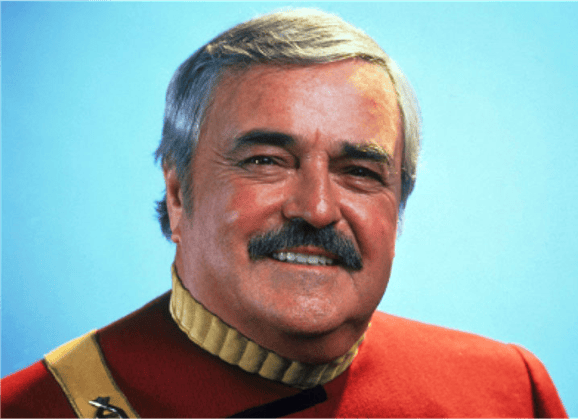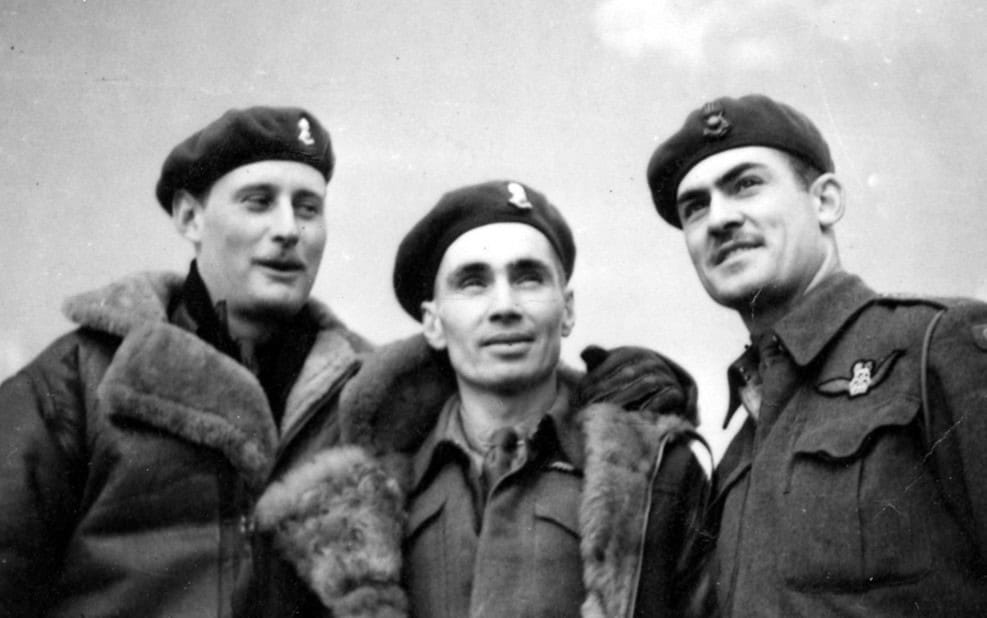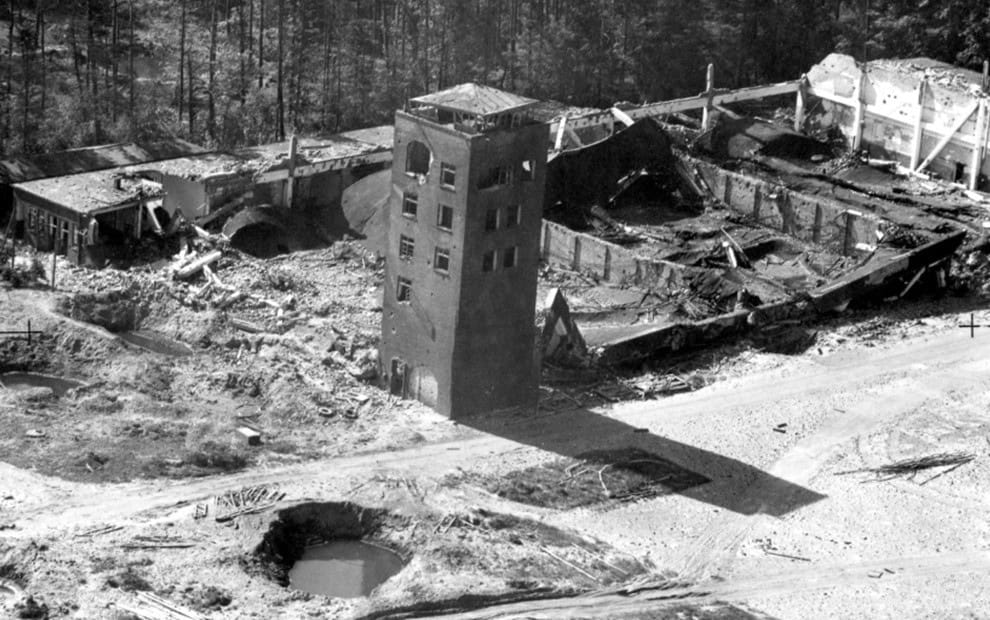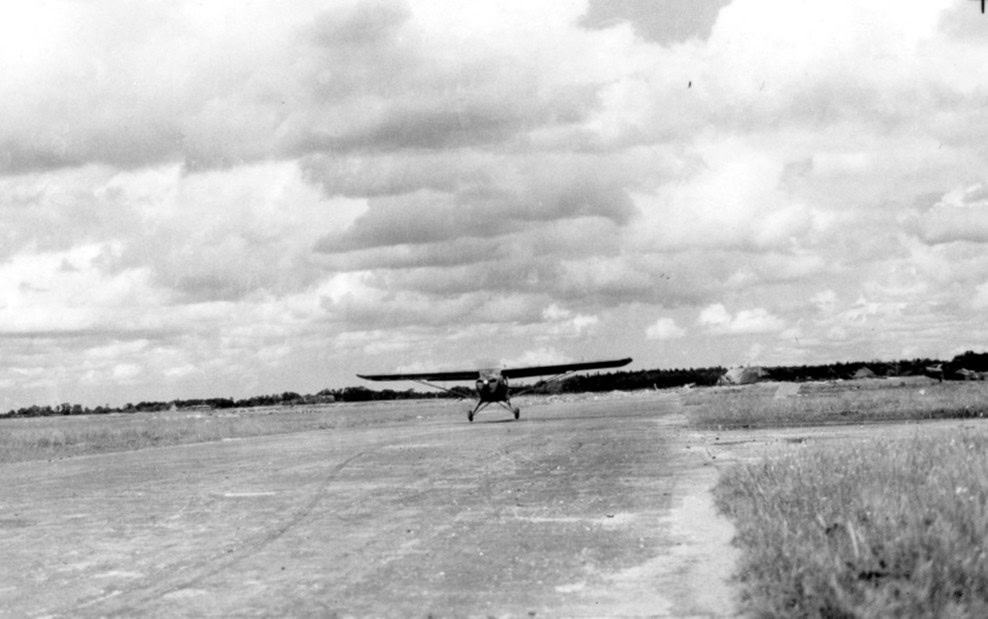Air OP Squadrons in WW2
You may be surprised that Canada had three Air Observation Post (Air OP) squadrons under the Royal Air Force’s (RAF) command during the Second World War. The first two squadrons, No. 664 and No. 665, participated in Air OP missions in the Netherlands and Germany starting in 1945. Their primary operational role was to direct artillery fire from the air to enemy targets. They formed the third squadron, No. 666, in March 1945, which never flew in operational missions. An excellent secondary source, Canada’s Flying Gunners by LCol (Ret’d) D. L. Fromov, CD, documents this proud RCA history.
A famous Canadian Gunner and Air OP pilot was Captain James Doohan (1920-2005), who played Scotty on the TV series Star Trek, shown to the right. Doohan was part of the third squadron, No. 666. He said, “You had to be some sort of a fool to volunteer [to be an Air OP pilot] or have a strong desire to fly.” Being an Air OP pilot meant extensive low-level flying, essential to evade enemy aircraft and ground fire.


The RCA Museum has a scrapbook from Lt E. J. Ambrose, an Air OP pilot and part of No. 664. Lt. Ambrose qualified from the first of six Air OP courses for Canadian Gunners, course No. 37. Note the photo of the first qualifying graduates, with Lt. Ambrose in the back row centre, dated 19 December 1944. They certainly all look proud of their achievement.
The RAF formed No. 664 Squadron on 9 December 1944. Pilots trained at No. 2 Elementary Flying Training School RAF in Cambridge, England, then at Larkhill, England. The first commanding officer of No. 664 was Major Dave R. Ely, as shown in the photo above. They were under the command of No. 70 Group RAF Fighter Command in England. In December 1944, they had 16 Auster Mark IV aircraft, and in January 1945, they were ready for deployment.
The RCA Museum is fortunate to have an Auster Mark V from the period in our storage facility. During the Second World War, the three Canadian Air OP squadrons deployed Auster Mark IVs and Mark Vs. In the future, we will display the Auster Mark V in our museum. Curators have discussed elevating the Auster approximately 20 feet in the air in the WW2 section to save on floor space, which will help tell an essential Gunner story during the Second World War.

In March 1945, No. 664 deployed to the Netherlands and participated in operational missions over enemy territory. Once deployed, they transferred to No. 84 Group Second Tactical Air Force (2 TAF). From the Netherlands, Lt Ambrose included one photo of himself with two other pilots. Lt Ambrose is in the centre, Lt Jones is to the left, and we could not identify the pilot on the right.
Lt Ambrose took many photos from the window of an Auster in flight documenting the extensive artillery bombings of German enemy territory, including bombed-out buildings shown below left. Note the image below right of an Auster taking flight in the Bad Zwischenan, home to one of the largest Luftwaffe airbases in Northwest Germany.



During the final phase of the war, Air OP pilots helped locate enemy targets in Holland. By 4 May, No. 664 was operating in Northwest Germany, proving highly mobile and able to fly at a moment’s notice. They completed missions for the 1st Polish Armoured Division, 1st British Corps, and HQ Netherlands District. After VE Day, the squadron continued flying duties for the Canadian Army Occupation Force until early 1946. No. 664 disbanded on 31 May 1946.
We are fortunate to have the photo album of the first Canadian Air OP squadron, No. 664, and lucky to have an Auster Mark V in our collection. They both help tell an important story about the Canadian Air OP squadrons and Canadian Gunner pilots during the Second World War.
By Andrew Oakden
